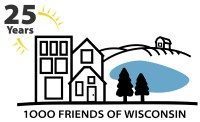Madison’s downtown has seen a boom in residential and mixed-use development, and the city’s 2012 Downtown Plan aims to guide and balance density, vibrant and walkable streets and public spaces, and historic preservation. A number of persistent challenges remain, however, particularly the downtown’s thin connection to Lake Monona, transportation hotspots, and a need for more public parks.
Read more about "Cover It Up: Decking over Madison’s John Nolen Drive would benefit the city but faces complex challenges"Decking over John Nolen
Read what Green Downtown Program Manager Matt Covert has to say about decking over John Nolen Drive in Madison. And check out these successful cut and cover examples: Chicago Columbus Duluth
Read more about "Decking over John Nolen"What’s most important to you about your neighborhood?
The answer about what’s most important about your neighborhood is walkability. Recent studies have championed the physical health benefits of designing for walkability, the improvements in community health and wellbeing from new residential construction in walkable areas, and the economic value of walkability in terms of dollars spent in the local economy.
Read more about "What’s most important to you about your neighborhood?"Madison neighborhoods’ “ped sheds”
How many places can you walk in 5, 10, or 15 minutes? The answer depends on what neighborhood you’re in! Madison Neighborhoods with smaller blocks and more connections offer more choices in where you walk, while more suburban areas limit where you can go on foot.
Read more about "Madison neighborhoods’ “ped sheds”"Walkability from Eye Level
This spring five UW-Madison students working through the Morgridge Center’s Badger Volunteers program are 1000 Friends’ “eyes on the street,” literally! They are walking up and down every street in Downtown Madison performing a walkability survey, taking notes on where there are blind corners, unsafe sidewalks, poorly designed intersections, conflicts with other road and street users, and other impediments to top-notch pedestrian-friendliness.
Read more about "Walkability from Eye Level"Understanding Changes in Walking and Biking in America’s Cities
With so much information at our fingertips day in and day out, sifting through it for clarity and analysis can be challenging. One of the things we try to do at 1000 Friends of Wisconsin is to shed light on underlying trends and patterns that can help communities make better decisions about design, services, and […]
Read more about "Understanding Changes in Walking and Biking in America’s Cities"





